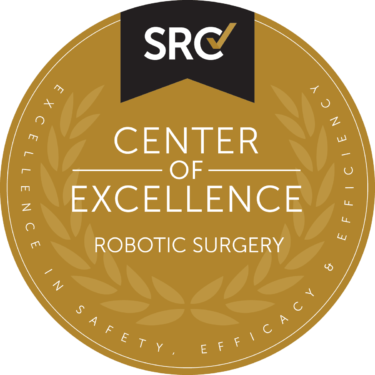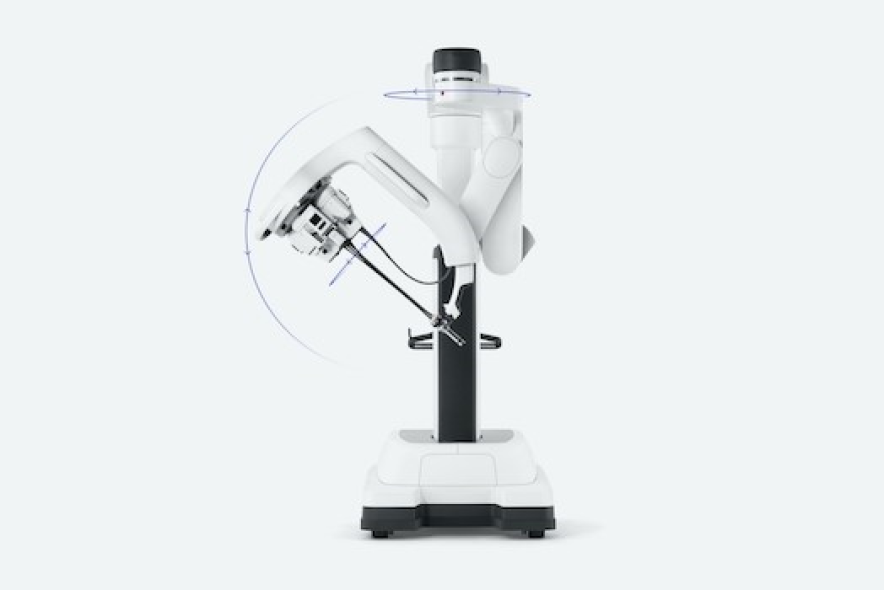Robotic-Assisted Surgery at Hoag

National Leader in Robotic Surgery
Hoag is a national leader in the field of robotic-assisted surgery, recently joining a small and accomplished group of health systems in the U.S. to complete its 30,000th procedure using the da Vinci® Surgical System. Achieving this major milestone demonstrates the significant growth of this type of minimally invasive surgery and Hoag’s commitment to excellence and improving the health and well-being of our patients. Hoag continues to exceed clinical benchmarks and guidelines for robotic-assisted surgery. Hoag is a renowned leader with 12 surgical specialties, almost 70 nurses and surgical technicians, and 47 surgeons contributing to the program.
Types of Robotic Surgical Platforms at Hoag

da Vinci® SP1 Surgical System
The da Vinci® SP1 Surgical System is an innovative robotic platform that allows surgeons to perform complex surgeries through a single incision. With its flexible robotic arms and advanced instruments, it offers exceptional precision and control. The system's single-port design reduces scarring and promotes faster patient recovery, making it a significant advancement in minimally invasive surgery for the treatment of prostate cancer.

da Vinci® Xi Surgical System
The da Vinci® Xi Surgical System is an advanced robotic platform that revolutionizes minimally invasive surgery. With its precise robotic arms and high-definition 3D visualization, surgeons can perform intricate procedures with enhanced control. The system's ergonomic design, intuitive controls, and superior range of motion provide unmatched surgical capabilities for the treatment of many types of cancer. The da Vinci® Xi is a game-changer in surgical technology, delivering improved outcomes and faster recovery for patients.

Ion Robotic-Assisted Bronchoscopy
The Intuitive's ION robotic-assisted platform is a cutting-edge surgical system that combines robotics, AI, and intuitive controls for enhanced precision and efficiency in the collection of lung tissue for biopsy. With its versatile robotic arm, advanced imaging, and real-time data analysis, surgeons can perform complex tasks with greater accuracy and make informed decisions during surgery. With the area’s only practicing Interventional Pulmonologist, the ION platform represents a significant advancement in surgical robotics, enabling safer and more effective pulmonology interventions.
Robotics Center of Excellence
Hoag has been designated a Center of Excellence in Robotic Surgery (COERS) from the Surgical Review Corporation. The COERS recognition acknowledges:
- Exceptional expertise in performing robotic-assisted surgeries.
- Meeting rigorous standards in patient care, surgical outcomes, safety protocols, and robotic technology utilization.
- Recognizing clinical expertise and proficiency.
- Demonstrating excellent patient outcomes.
- Utilizing state-of-the-art robotic surgical systems and equipment.
- Implementing robust safety protocols and guidelines.
- Commitment to continuous improvement in surgical practices.
Patients can take comfort in knowing they are not only at a hospital that has the best technology and most renowned surgeons health care has to offer, but are also receiving the best possible treatment.

Robotics in Use at Hoag
Benefits for Patients
- Minimally invasive procedures: Robotic surgery enables surgeons to perform minimally invasive procedures with smaller incisions, resulting in less trauma to the body, reduced pain and quicker recovery times for patients.
- Enhanced precision and accuracy: Robotic systems provide surgeons with increased precision and accuracy during procedures, leading to improved surgical outcomes and reduced risk of complications.
- Reduced blood loss: Robotic instruments often include cauterization capabilities, minimizing blood loss during surgery and reducing the need for blood transfusions.
- Shorter hospital stays: Robotic-assisted surgeries often result in shorter hospital stays for patients due to the minimally invasive nature of the procedures and faster recovery times.
- Faster recovery: Robotic surgery can lead to faster recovery times compared to traditional open surgeries, allowing patients to return to their normal activities more quickly.
- Reduced scarring: Smaller incisions used in robotic surgery result in smaller scars, which are less noticeable and can improve the cosmetic appearance of the surgical site.
- Lower risk of infection: Minimally invasive robotic procedures reduce the exposure of internal organs to external contaminants, leading to a lower risk of infection.
- Decreased pain and discomfort: Robotic surgery causes less tissue trauma, resulting in reduced post-operative pain and discomfort for patients.
- Improved quality of life: Robotic surgery can improve the overall quality of life for patients by providing effective treatment options with minimal invasiveness and faster recovery, allowing them to resume their daily activities sooner.
- Expanded treatment options: Robotic-assisted surgery opens up new possibilities for patients who may not be suitable candidates for traditional open surgeries, allowing them to receive treatment that might otherwise be unavailable to them.
Benefits for Surgeons
- Enhanced precision: Robotic surgery allows surgeons to perform procedures with greater precision and accuracy, as robotic instruments offer a higher degree of dexterity and stability compared to human hands.
- Improved visualization: Robotic systems provide high-definition, 3D visualization of the surgical site, enabling surgeons to have a clear and magnified view of the area being operated on.
- Reduced fatigue: Robotic surgery reduces the physical strain on surgeons by minimizing hand tremors and providing ergonomic comfort during long procedures. Surgeons can operate from a console while seated, reducing fatigue and improving focus.
- Increased surgical access: The flexibility and maneuverability of robotic instruments allow surgeons to access difficult-to-reach areas in the body, enabling complex surgeries that may not be feasible with traditional techniques.
- Enhanced suturing capabilities: Robotic surgical systems often incorporate advanced suturing and stitching features, enabling surgeons to perform precise and intricate procedures with greater ease.
